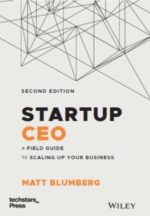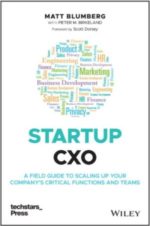Just Say No
Just Say No
A recent study by AOL (published here in CNET) says that on average, people in America check email five times per day and can’t go without it for more than three days at a time. And six out of ten respondents said they check email on vacation.
While I’m as guilty as anyone of perpetuating these statistics, I am a big fan of taking regular time off from email. Whether it’s a day each week, or a whole weekend here or there, or at least one week vacation per year, it’s important to Just Say No every once in a while. Even Fred took an email holiday recently, to great success, I believe. The great thing about email is that they’ll all be there waiting for you when you log back in.
Decoration Day
Decoration Day
Today, Memorial Day, is the day my Grandma Hazel always calls Decoration Day. That’s obviously a name that pre-dates me, so I thought I’d look it up today and figure out what it originally stood for and when the switch happened.
According to Wikipedia, the holiday originally called Decoration Day was first observed in 1868 to honor fallen Union solidiers of the Civil War. As you can imagine, southern states didn’t really recognize the holiday until at least 50 years later, and many continue even today to have a separate Confederate Decoration Day (now Confederate Memorial Day or somewhat disturbingly Confederate Heroes Day in Texas) for years. After World War I, the day came to honor all American soldiers who died in war.
The name Memorial Day was first used in 1882 but didn’t really take hold until after World War II, finally becoming the official federal name for the day in 1967. The holiday became an official national holiday in 1971.
Excited by this? Just wait for this fall’s Veteran’s Day, also Remembrance Day or Armistice Day.
Counter Cliche: The VC Pass
Fred’s VC Cliche of the Week this week is called "the pass," which is the euphemism that VCs have adopted when they decide not to invest in a particular company or entrepreneur. Fred’s VC wisdom comes down to this:
1 – Say no quickly to the things you know you aren’t going to do
2 – Don’t take an opportunity into diligence unless you are willing to spend enough time to truly undersand it, and if you don’t invest, make sure you are willing to spend time explaining why.
It won’t make it any easier on the entrepreneur who is trying to find someone to invest in his business that you are passing, but they might learn something from the discussion, and in the end you will gain their respect.
And in this age where VCs and their money are a dime a dozen and great entrepreneurs are rare, respect from entrepreneurs is critical to success in the VC business.
The counter cliche is that the same advice applies to entrepreneurs who "pass" on a particular VC. There are many times where startups (especially good ones) have offers on the table or are pursuing them from multiple VCs. That strategy is a must and one that I’ve blogged about before.
VCs may be a dime a dozen, but great ones are hard to find. If you find yourself in the position of having to "pass" on one of them — follow Fred’s advice and do it quickly, politely, and without wasting any more of their time.
Email Articles This Week
Email Articles This Week
I know, not a real inspired headline. There are two interesting articles floating around about email marketing this week. I have a few thoughts on both.
First, David Daniels from Jupiter writes in ClickZ about Assigning a Value to Email Addresses. David’s numbers show that 71% of marketers don’t put a value on their email addresses. I think that may be an understatement, but it’s a telling figure nonetheless. David’s article is right on and gives marketers some good direction on how to think about valuing email addresses. The one thing he doesn’t address explicitly, though, is how to think about the value of an email address in the context of a multi-channel customer relationship. Customer Lifetime Value is all good and well, but the more sophisticated marketers take the next step and try to understand by customer (or segment) how valuable email is relative to other channels.
Second, David Baker writes in Mediapost’s Email Insider about Finding New Customers Via Email. The column is a nice discussion of how important email is to retaining customers. We at Return Path completely agree. However, the question Baker posed at the beginning is not well addressed — “Should I use email to find new customers?”
My company works with hundreds of smart marketers every week who say, “Yes! Because it’s effective, cost efficient and is the only way to combine the relevancy of search with the power of online advertising.”
I applaud Baker’s note of caution to marketers planning to acquire customers via email. It’s always a good idea to plan the campaign with the same diligence you plan any marketing outreach — making sure the targeting, message, design and offer are all optimized for the prospect interest and the medium.
However, I take great issue with his conclusion that email acquisition marketing “does more harm than good.” Our clients disprove this claim every day. Email prospecting done well includes a synergy of organic, viral and paid techniques. Consumers and business professionals still want to receive relevant and informative offers via email. More than 50,000 of them sign up every DAY for email offers from Return Path alone.
Poeple who have failed list rental tests (and there are lots of them) need to ask some hard questions of their campaign strategy, their creative, their list rental partner, and their agency. Did you try to send the same message and design to a list of prospects as you do to your house file? No wonder no one got the message, they don’t even know you. Was your list double opt-in? Did you segment the list by interest category or demographics? Perhaps your message was mis-targeted. Did your landing page make it easy to take advantage of the offer? Did you test on a small portion of the list before blasting the entire file? Did you optimize your subject line to ensure higher open rates? Did you try to do too much? The golden rule of email list rental is “one email, one message.”
The success of many marketers using list rental today can not be ignored. Done well, email acquisition is extremely powerful. And, the addition of new lead generation, co-registration and offer aggregation opportunities create even more custom and targeted opportunities to connect with prospects.
It’s too easy to dismiss something that didn’t work two years ago by blaming the medium. Instead, recognize that old experience for what it was. A well-intentioned effort to test out a new medium, that didn’t work because many tried to apply practices from other media to it. Times have changed, and email acquisition has proven its value.
Stick with Daniels’ article, figure out how valuable an email address can be for you, then go out and collect as many of them as you can from customers and prospects who will be all-too-willing to give them to you in exchange for content, offers, and other points of value.
Mental Math
Mental Math
One of the most important things a CEO can do when thinking about conversations with Board members or investors is to do mental math. That’s how directors operate. They remember key metrics from time to time and project them forward in their minds. Whatever your financial or operating results, you need to make sure they will mesh with your investors’ mental math.
Looking at your cash balance? Look back at the last financial statement’s cash number and mentally work your way to the current statement: operating profits or losses, big swings in AR or AP, CapEx, and other "below the line" items. Do they add up? Be ready to walk everyone through the mental math at your next meeting.
The same thing applies to operating metrics — the size of your database, your headcount, your sales commission rate. Directors only have so much time to be in the details of your business…make sure you know the metrics they zero in on, and work that mental math!
How Much Blogging is Too Much Blogging?
How Much Blogging is Too Much Blogging?
After being completely (and blissfully, I might add) offline for 11 days, I have returned to find 247 new postings in my Newsgator folder. Only a short year ago, I would have come back from vacation to too many emails…now I get to sift through too many emails AND too many blog postings.
On the bright side, I have at least these two images of the Barolo wine country  and the Amalfi coast
and the Amalfi coast solidly etched in my brain to ease re-entry to work. Anyone interested in a brief travelog of the Italian countryside, click here and follow the top link.
solidly etched in my brain to ease re-entry to work. Anyone interested in a brief travelog of the Italian countryside, click here and follow the top link.
Blogiversary
Blogiversary
Next week will mark the one year anniversary of my blog (and for that matter, Brad’s blog). It’s been a lot of fun, so I think I’ll celebrate by taking two weeks off and going to Europe with Mariquita (well, ok, I was planning on doing that anyway).
Even if no one read OnlyOnce, I’d be happy I’m writing it for all of the reasons I expressed here back in June. But lots of people do read it, more and more every day. In fact, an executive at Yahoo! who I met earlier this week actually quoted it to me — as Bruno Kirby said in When Harry Met Sally, “the first time someone has ever quoted me back to me before.”
In my very first posting, which explains the blog’s title and mission, I said I’d try not to be too extraneous with the material I post. So I took a look through some stats this morning about the last year of blogging:
– Including this, I’ve written 131 postings, about one every three days
– Typepad doesn’t keep stats on blog topics/categories, so this is an estimate (and postings can be associated with multiple categories), but it looks like I’ve posted 6 times about books, 10 times about current events, 4 times about travel, 7 times about blogs, 9 times about “business” (whatever that means), 52 times about email/web/tech, 40 times about entrepreneurship, and 38 times about leadership/management. So at least I stayed more or less on point.
– I’ve received a total of 125 comments, or less than one per posting (this is NOT a truly interactive medium!)
– I have about 1,000 regular readers, roughly 70% via RSS feed, 20% via email subscription, and 10% via live alerts or just regular web visitors
– My Amazon Associates link has generated about 150 sales for a total of $2,700 and about $170 in affiliate fees to me, which basically covers the cost of my Typepad subscription
Thanks to everyone who reads and comments. Feedback is always welcome for year two!
Book Short: More on Email Marketing
Book Short: More on Email Marketing
My friend Bill Nussey’s The Quiet Revolution in Email Marketing is a good read for those in the industry. It’s a little different in focus than our recently published book, Sign Me Up!, and in many ways is a good complement.
Bill develops a good framework for Customer Communication Management (CCM) based on his experience as CEO of SilverPop, one of the leading email marketing companies. He builds on Seth Godin’s permission framework and applies it directly to email marketing, point by point. He addresses head on every email marketer’s nightmare, when you tell someone what you do for a living, and the person replies “oh, you’re a spammer.”
The book also has a wonderful quote from Bill’s SilverPop colleague Elaine O’Gorman: “Locking down email policies and enforcement too tightly i like cooking a potato in the microwave. If you don’t poke some holes in the potato before turning on the microwave, you’ll be doing a lot of clearning up afterwards.”
Promiscuity
Promiscuity
I figure the title will entice someone new to read this (although he or she might be sorely disappointed with the actual content). Fred’s posting today about VCs’ conflicts of interest, besides giving me fodder for my weekly counter-cliche posting, brings up another interesting point, one about entrepreneurs and their levels of confidentiality or secrecy about their business plans.
I heard a quote once from Vinod Khosla of Kleiner Perkins that has stayed with me for years: that “to be successful in the new economy you must be open to the point of promiscuity.” I think Khosla is right. As Fred says, VCs are notorious for meeting lots of companies before making an investment, and as an entrepreneur on the other side of the table, it’s impossible to completely protect your ideas and thoughts if you want to attract outside capital. You just have to trust that the VCs are going to be as honest as possible in how they use the information you share with them. Same goes for potential partnerships and even M&A as well. You simply can’t have productive conversations on those topics without opening the proverbial kimono at least a little bit.
But being promiscuous with the state secrets of your business carries certain risks as well. If the partnership or M&A conversation goes awry, you could easily find yourself with a competitor that knows part of your game plan. We’ve had this happen at least once at Return Path, and to this day, it still irritates the heck out of us. But we still think we made the right decision at the time to share that information — and now at least we know that our new competitor isn’t creative enough to come up with his own ideas!
On a completely side note, anyone who’s not using desktop search like Google or the Lookout plugin for Outlook is missing out. I couldn’t remember the exact quote from Vinod Khosla, but I remembered that it was emailed to me years ago by my colleague Mary Lynn McGrath. It took Lookout 0.06 seconds to find the exact email from September of 2000 using keywords McGrath and Vinod. Amazing (and thanks again, Mary Lynn!).
Counter Cliche: No Conflict, No Interest
Counter Cliche: No Conflict, No Interest
The entrepreneur’s take on Fred’s VC cliche of the week — "No conflict, No interest" is that it applies equally but differently to management teams.
Our nation’s first president, George Washington, is often said to have brilliantly placed political enemies Thomas Jefferson and Alexander Hamilton on his first cabinet so he would have differing points of view from which to choose when deciding some of the complex and delicate issues that faced our nation in its infancy. And many of those early decisions of the Washington administration — things like how to pay down the debt from the Revolution, or whether and how to put down the Whiskey Rebellion — were critical in forming our nation and deciding how much power to invest in our government.
The tension between one executive and another on a management team is, though perhaps less historically important, no different. A management team that finds itself 100% in agreement, 100% of the time, is in trouble. A management team that can have disagreements and use that tension productively to drive decisions is much better off. Building such a team requires the CEO to seek out executives who view the world differently, who have the courage to speak their minds in the face of strong opposition, and who have the ability to see different points of view.
Book Short: Are You Topgraded?
Book Short: Are You Topgraded?
I read a decent volume of business books (some of my favorites and more recent ones are listed in the left hand column of the blog). I have two main pet peeves with business books as a rule: the first is is that most business books have one central idea and a few good case examples and take way too many pages to get where they’re going; the other is that far too many of them are geared towards middle and upper management of 5,000+ person companies and are either not applicable or need to be adapted for startups.
Anyway, I thought I’d occasionally post quick synopses of some good ones I’ve read recently. Topgrading, by Brad Smart was so good that this post will be longer than most. It’s a must read for anyone who’s doing a lot of hiring (fellow entrepreneur blogger Terry Gold is a fan, as well).
The book is all about how to build an organization of A players and only A players, and it presents a great interviewing methodology. It’s very long for a business book, but also very valuable. Buy a copy for anyone in your company who’s doing a lot of hiring, not just for yourself or for your HR person. I think the book falls down a little bit on startup adaptation, but it’s still worth a read.
There’s been much talk lately about “the importance of B players” in Harvard Business Review and other places. I share the Topgrading perspective, which is a little different (although more semantically different than philosophically different).
The Topgrading perspective is that you should always hire A players — the definition of which is “one of the top 10% of the available people in the talent pool, for the job you have defined today, at the comp range you have specified.” I absolutely buy into this. Don’t like what you’re seeing while screening candidates? Change one of the three variables (job definition, comp, or geography) and you’ll get there.
The corrolary to the A-player-only theory is that there are three types of A players — the author calls them A1, A2, and A3. A1’s are capable of and interested in rapidly rising to be leaders of the organization. A2s are promotable over time. A3s are not capable of or interested in promotion.
I think what the HBR article on B players is talking about is really what Topgrading calls A3 players. A3 players are absolutely essential to an organization, especially as it grows over time and develops more operational jobs that leverage the powerhouse A1s and A2s that make up such a big percentage of successful startups. You just have to recognize (perhaps with them) that A3 players may not be interested in career growth and promotion and not try to push them into more advanced roles that they may not be interested in or capable of doing well.
I’m a huge believer in having a healthy balance of A1s, A2s, and A3s, but I will always want to hire A players per the above definition. Why would you ever settle for less?



